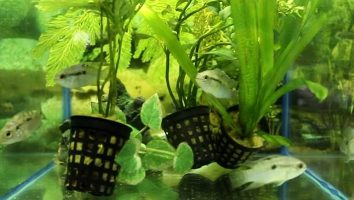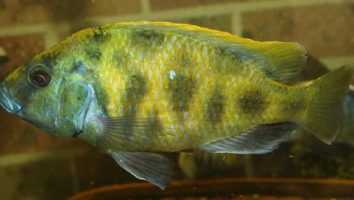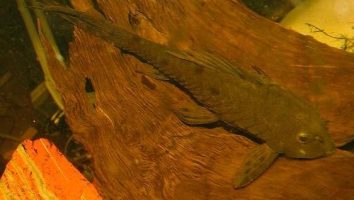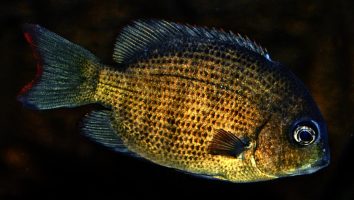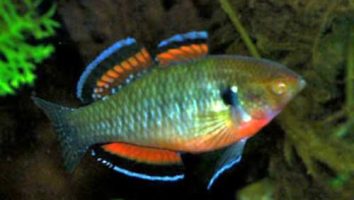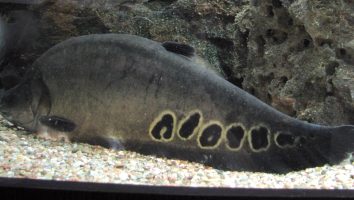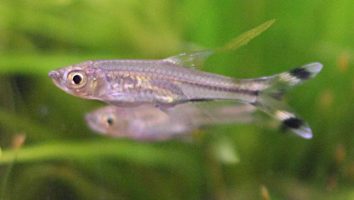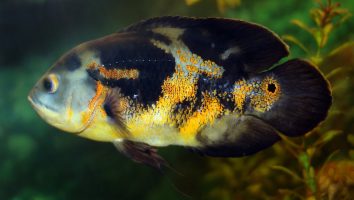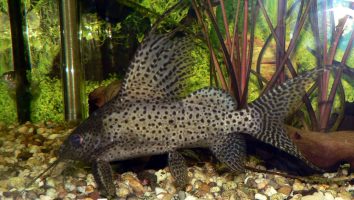The giant danio is a striking freshwater fish that is perfect for beginner aquarists. They’re easy to care for, and can tolerate a wide range of water conditions.
This guide will teach you everything you need to know about giant danio care. You’ll learn about their diet, size, lifespan, and more!
Table of contents
Species overview
Giant Danios (Devario aequipinnatus) are a schooling fish that come from the mountainous regions of Myanmar.
They can be found in a variety of habitats but prefer slow-moving waters with plenty of plants and hiding places.
Giant Danios are omnivores and will eat most things put in front of them. In the wild, they eat a diet of small insects, crustaceans, and plants.
Giant Danios are a popular choice for many freshwater aquariums because they are so hardy and easy to care for. They are also very active fish that add a lot of movement to the tank.
Appearance
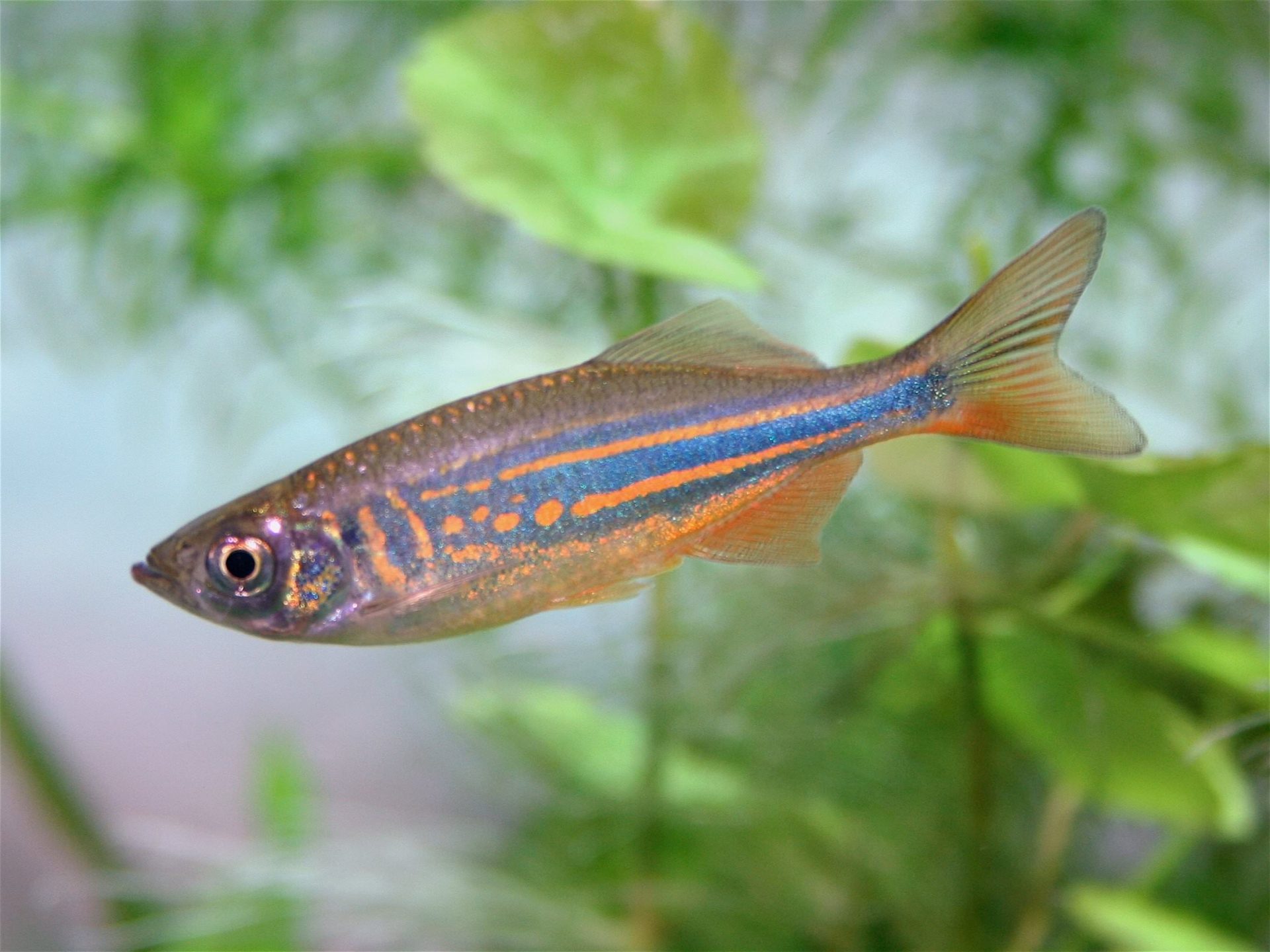
The Giant Danio is a freshwater fish that is easily recognizable due to its large size and bright colors.
These fish are very long and thin, with a body shape that is similar to that of a torpedo. They are a bright blue color all over their bodies, with a white belly. The blue color is darkest on their backs and lightest on their bellies.
They have large eyes that are silver in color, and their fins are translucent. The Giant Danio has a very long dorsal fin that starts about halfway back on their body and extends all the way to the end of their tail.
Their anal fin and caudal fin are both large and forked, and they have a small but noticeable adipose fin. The Giant Danio also has a very long and thin barbels on their chin, which they use to help them find food.
Lifespan
The giant danio has a lifespan of up to 5 years in captivity. However, the average lifespan is usually closer to 3 years.
As with most fish, the giant danio’s lifespan will vary based on the quality of care they receive. Things like water quality, diet, and stress can all impact their lifespan.
Size
The Giant Danio can grow to be a little over 4 inches in length, making it one of the larger fish in its family.
Tank
Tank Size
The minimum tank size for giant danios is 30 gallons. This fish is a schooling fish so you’ll need to provide enough space for at least 5 or 6 fish.
As with most schooling fish, we recommend going up in tank size if you can. Every extra gallon will make a big difference and allow you to keep a larger school or more tank mates if you’re interested in a community tank.
Water Parameters
Giant danios are a schooling fish, so you’ll want to keep at least six together. They do best in a well-planted aquarium with plenty of hiding spots.
Since they’re a tropical fish, they need warm water to thrive. They also prefer slightly acidic water with a neutral pH.
Here are a few things to keep in mind when it comes to giant danio water parameters.
- Water Temperature: 68 to 82 degrees Fahrenheit
- pH Levels: 6.5 to 7.5
- Water Hardness: 5 to 19 dGH
- Alkalinity Levels: 3-10 dKH
What To Put In Their Tank
Giant danios are a schooling fish, which means they like to be in groups. Because of this, you’re going to want to set up your tank in a way that allows them to feel comfortable and have plenty of space to swim.
Gravel is always a good choice for the substrate since it’s easy to clean and maintain. You can go with something a little fancier if you want, but it’s not necessary.
As for plants, these fish are known to nibble on vegetation. This means that you’ll want to choose something that can handle a little bit of abuse (hornwort, water wisteria, or java moss are all great choices).
You should also include some hiding spots in their tank. driftwood, rocks, and caves are all suitable choices. This will give them somewhere to go when they feel like they need a break from the rest of the school.
One thing to keep in mind is that these fish like to have a lot of open space to swim in. This means that you shouldn’t go overboard with the decorations. A few pieces here and there should be enough.
Common Diseases
The Giant danio is a very hearty fish that is resistant to most diseases. However, there are still a few things that you need to watch out for.
The most common disease that affects this species is ich. This is a parasites that will attach itself to your fish and cause them to develop white spots all over their body.
If left untreated, ich can be fatal. However, it is relatively easy to treat if you catch it early.
The best way to prevent your Giant danios from getting sick is to maintain a clean and stable tank. This will keep the water quality high and reduce the chance of your fish getting sick.
You should also avoid putting your Giant danios in a tank with aggressive fish. This can cause stress which can make your fish more susceptible to disease.
Behavior & Temperament
Giant Danios are schooling fish, which means they do best when they’re kept in groups. In the wild, they school together for protection. There are so many of them that predators find it difficult to single out one fish.
The good news is that you don’t need to have a huge tank to keep Giant Danios. Even a 10-gallon tank will do as long as it’s long and wide. That’s because these fish like to swim in long, horizontal planes rather than vertically.
Giant Danios are active fish that love to swim. They’re constantly on the move, exploring every inch of their environment. If you have a planted tank, they may uproot some of the plants in their search for food.
As for temperament, Giant Danios are relatively peaceful fish. They get along with other fish that are similar in size and activity level.
Tank Mates
Giant Danios are a schooling fish, so they should be kept in groups of at least six. They are peaceful fish and get along well with other peaceful fish. They can be kept with fish of similar size, but they may eat smaller fish.
Some good tank mates for Giant Danios include:
- Neon Tetras
- White Cloud Mountain Minnows
- Ghost Shrimp
- Cherry Shrimp
- Guppies
- Mollies
- Platies
- Swordtails
Breeding
Giant Danios are easy to breed in the home aquarium. All you need is a group of Danios, a breeding tank, and some patience.
When ready to spawn, the female Giant Danio will lay her eggs on a leaf or another smooth surface. After she lays the eggs, the male will fertilize them.
Once the eggs are fertilized, the parents will eat them if given the chance. That’s why it’s best to remove the adults from the breeding tank after spawning has occurred.
The eggs will hatch in about 24 hours. Once they hatch, the fry will be free-swimming and ready to eat. You can feed them live foods like brine shrimp or bloodworms.
As they grow, you can start to introduce them to flake food and pellets.
Conclusion
The Giant Danio is a great fish for beginners and experts alike. They’re relatively easy to care for and are very active, which makes them fun to watch.
They’re also a very hardy fish, which means they can withstand some beginner mistakes. Overall, we think the Giant Danio is a great choice for anyone looking for a fun and active fish for their tank.

